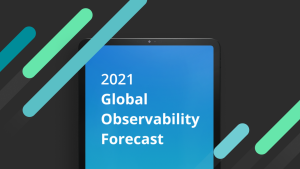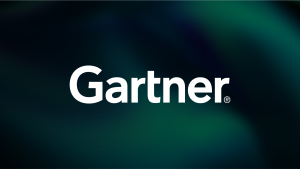With the increased reliance on digital experiences already a thing pre-pandemic, but even further accelerated as a result of the pandemic—think online grocery shopping, students and workers alike on video conference calls, virtual doctor meetings, and online entertainment to name a few—we see more and more of our customers looking to New Relic and observability to ensure best-in-class digital experiences for their customers, employees, partners, and suppliers.
With this in mind, we commissioned a survey of more than 1,300 software engineers, developers, IT leaders, and executives in the Americas, Europe, and Asia to understand their perspectives and opinions on observability. What we uncovered are insights, best practices, and emerging trends that we’ve distilled into our 2021 Observability Forecast. Spoiler alert: It also includes five key insights for charting your organization’s own path to modern observability.
You can read on for my take, or go straight to our 2021 Observability Forecast.
Let’s start with modern observability—What is it?
Modern observability empowers software engineers and developers with a data-driven approach across the entire software lifecycle, bringing all telemetry—metrics, events, logs, and traces—into a unified data platform. Modern observability pairs that complete view of your data with powerful full-stack analysis tools, which enable software engineers and developers to plan, build, deploy, and run the great software that underpins great digital experiences. Those great digital experiences help to fuel satisfaction, loyalty, and top-line growth.
Now on to the survey data...
Looking at the survey data, 90% of respondents believe that observability is important and strategic to their business, and 94% believe it's important and strategic to their role. Even executives are seeing the benefits of observability with 81% expecting to increase their observability budget in the next year; 20% expect significant increases.
In fact, 91% see observability as critical across every stage of the software lifecycle—planning, building, deploying, and running (or operating, if you prefer) software. As you might expect, most see the biggest impacts in operations where traditional monitoring tools have been employed most broadly to troubleshoot problems.
And the benefits are clear including supporting an organization’s digital transformation, delivering better digital experiences for end users, enabling faster deployment, driving greater cost effectiveness, among others.
At the practitioner level, observability helps improve planning cycle times, decrease change failure rates, accelerate release frequency, and reduce mean time to resolution. This, of course, all helps organizations achieve goals around improving uptime and reliability, driving operational efficiency, and delivering exceptional customer experiences that fuel innovation and growth.
With software underpinning the success of every modern business, it’s great to see the direct connection between the work that software engineers and developers do and business success and top line growth.
Yet, despite the clear benefits, the survey revealed that there is still a massive opportunity for IT leaders, software engineers, and developers to seize the power of observability in their organizations. Whether it’s a lack of understanding, lack of strategy, or another barrier, only 50% of the respondents’ organizations are in the process of implementing observability.
And of those who are already leveraging observability, 72% note having to toggle between two or more tools—and 13% between 10 or more tools—to monitor the health of their systems. That’s a staggering number of tools that inhibits success just in terms of wasted time stitching together siloed data and switching context or chair swiveling just to do one’s job.

The good news is that there is a path forward to modern observability—a world where software engineers and developers are empowered with a data-driven approach, where all of their data is in a single platform with powerful analysis tools that help them get past the what to uncover the why. Finally, engineers can focus on the higher-priority, business-impacting coding that they love.
Dive into the 2021 Observability Forecast to see more of the insights and best practices uncovered in the research, plus get the five key insights for charting your path to modern observability. Or better yet, sign up for a free New Relic account, ingest your data, and start reaping the benefits of modern observability today.
Las opiniones expresadas en este blog son las del autor y no reflejan necesariamente las opiniones de New Relic. Todas las soluciones ofrecidas por el autor son específicas del entorno y no forman parte de las soluciones comerciales o el soporte ofrecido por New Relic. Únase a nosotros exclusivamente en Explorers Hub ( discus.newrelic.com ) para preguntas y asistencia relacionada con esta publicación de blog. Este blog puede contener enlaces a contenido de sitios de terceros. Al proporcionar dichos enlaces, New Relic no adopta, garantiza, aprueba ni respalda la información, las vistas o los productos disponibles en dichos sitios.





